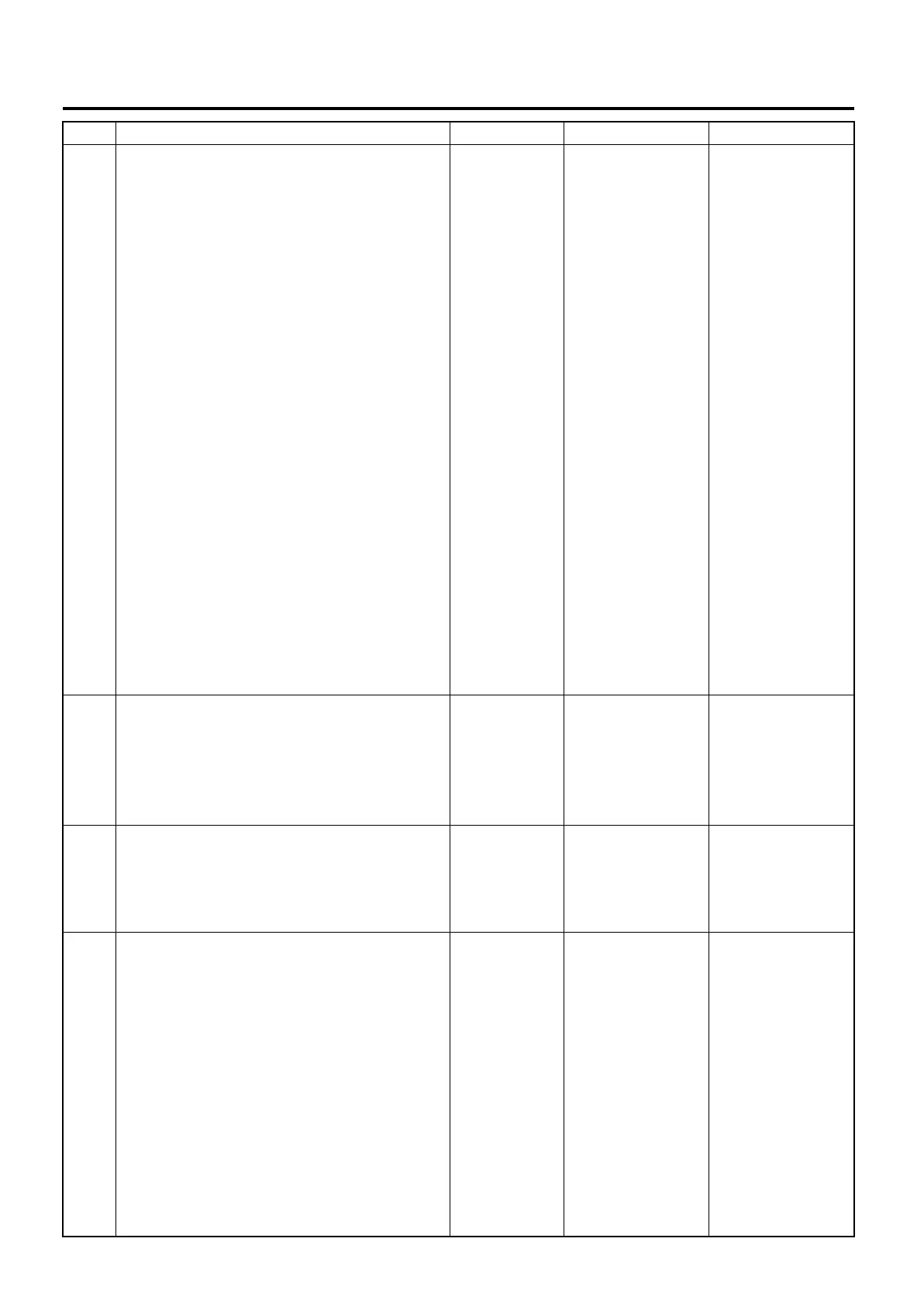1A-150 Engine Control System (4HK1)
3
1. Inspect the following for possible causes of
low boost pressure.
• Air leakage around the boost pressure
sensor or objects that block the sensor
hole.
• Air leaking around any of the air induction
tubing between the turbocharger and
intake manifold. Check for damaged
components and for loose clamps.
• Turbine shaft binding causing lower
turbocharger shaft spinning speeds.
Refer to Turbocharger Assembly in
Section 1J Induction.
• Turbocharger nozzle control solenoid
valve for a stuck condition. Perform the
Turbocharger Control with a scan tool.
• Intake throttle valve sticking. Perform the
Intake Throttle Solenoid Control with a
scan tool.
• Restricted air cleaner element, restricted
or collapsed air tubing between the air
cleaner and the boost pressure sensor.
• Oil in the air induction tubing causing an
incorrect boost pressure sensor signal.
When there is adhesion of oil inside of
the tubing, intercooler or turbocharger it
needs to be wiped off.
2. Repair or replace as necessary.
Did you find and correct the condition?
—
Go to Step 10 Go to Step 4
4
1. Turn ON the ignition, with the engine OFF.
2. Observe the Boost Pressure and Barometric
Pressure (BARO) with a scan tool.
Does the scan tool indicate that the difference
between the Boost Pressure and BARO is
more than the specified value?
10 kPa (1.5
psi)
Go to Step 5
Go to Diagnostic
Aids
5
Compare the BARO value to the range specified in
the altitude vs. barometric pressure table. Refer to
Altitude vs Barometric Pressure.
Is the BARO parameter within the range
specified?
—
Go to Step 6 Go to Step 7
6
1. Turn OFF the ignition.
2. Disconnect the boost pressure sensor
harness connector.
3. Inspect for an intermittent and for poor
connections at the harness connector of the
boost pressure sensor (pins 1 and 3 of E-24).
4. Disconnect the ECM harness connector.
5. Inspect for an intermittent, for poor
connections and corrosion at the harness
connector of the ECM (pins 91 and 95 of E-
12).
6. Test for high resistance on each circuit.
7. Repair the connection(s) or circuit(s) as
necessary.
Did you find and correct the condition?
—
Go to Step 10 Go to Step 8
Step Action Value(s) Yes No
LG4HKED-WE-0871.book 150 ページ 2007年11月29日 木曜日 午後6時29分

